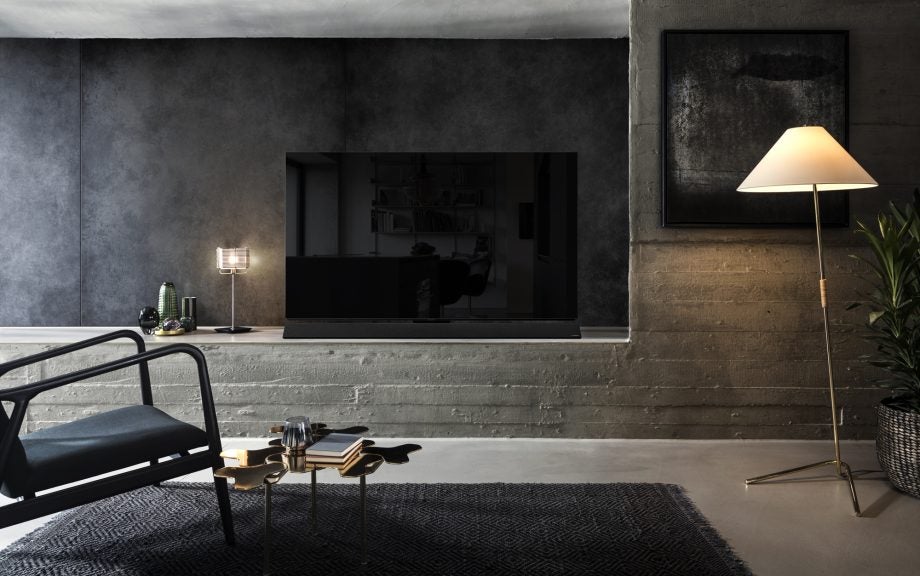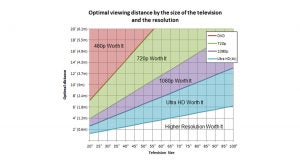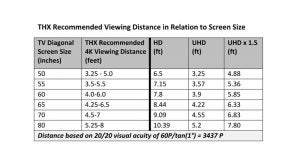What size TV should I buy?

If there’s one question that’s asked more than any other when it comes to buying a new display, it’s what size TV should I get?
Well, first you’ll need to decide on your budget, and maybe think about the type of TV technology – for example, will you go for OLED or QLED? Eventually, you’ll get around to that important decision over the size screen to buy.
Can a TV be too big?
If we were being facetious, the answer to that question would be ‘no’. We’d say buy a TV as big as your budget will allow. We frequently hear complaints from folk who wish they’d plumped for something bigger. It’s amazing how quickly you get used to a larger screen size.
However, we appreciate that buying the biggest TV possible isn’t always an option. Even if you have sufficient budget, you may not have the space in your lounge to accommodate it, or it might be wildly inappropriate. You may also have a partner that isn’t keen on a large screen, or you may simply feel that a super-sized TV is obtrusive and tacky.
Related: Best TVs
Screen size and resolution
So what is the ideal screen size? To a certain extent, the size TV you opt for will depend on your choice of resolution. TV manufacturers have significantly scaled back their production of high-definition TVs as the global market shifts towards 4K. As a result, HD resolutions are largely reserved for smaller screens these days, with sizes ranging from 24 to 36 inches.
In the days before flat panels, a screen size of 36 inches would have been considered enormous. These days, TVs of that size are marketed as ideal for kitchens, studies and even bathrooms. If that’s the kind of location you’re buying a TV for, then it’s simply a matter of choosing a screen size that will comfortably fit into those smaller rooms.
If you’re looking for a TV for your main living room, on the other hand, you really need to start thinking about larger screen sizes, as well as a number of other factors. As we’ve already said, you should establish your budget first because that will ultimately determine the size and resolution of your new TV.

If money is tight, or your living room is relatively small, then there are plenty of larger screen high-definition TVs from which to make your choice. Be aware, though, that the lower the resolution of your screen – that is, the number of pixels that make up the picture – the further away from it you need to be to ensure you can’t see individual pixels.
Although rare these days, there are 720p HD TVs that give you 1024 x 768 pixels, 1280 x 720 pixels, or 1366 x 768 pixels. A TV with a 1080p resolution is often called Full HD, and offers 1920 x 1080 pixels. This works well with video game consoles, for watching Blu-ray discs, internet streaming services, and HD terrestrial, cable or satellite broadcasts.
The fastest growing segment is in 4K Ultra HD TVs, with a resolution that allows you to sit closer to a very large screens and still get a lovely, crisp picture. 4K UHD is generally 3840 x 2160 pixels, which is four times the pixels of Full HD. This is used for gaming consoles, internet streaming services, satellite broadcasters, and 4K Ultra HD Blu-ray.
Related: Best Budget TVs
Screen size and viewing distance
So aside from budget, circumstances, personal preference, and resolution, a reliable rule of thumb for choosing the best size TV is viewing distance – how far you sit from the TV under your normal viewing conditions. Today’s 4K TVs offer more detail, so you can sit closer to the television, but not so close that you can see the screen pixels.
Of course, you don’t want to sit so far away that you miss any of the incredible detail either, which means you need a handy number to divide the viewing distance by to come up with an optimal screen size. There are a number of different dividers, but all assume you have normal eyesight. If not, best get down to Specsavers before you start.
Related: Best TV Deals
Get out your calculators
The manufacturers, retailers and industry bodies such as SMPTE (Society of Motion Picture and Television Engineers) or THX all offer different dividers, but manufacturers tend to be the most conservative. As a general rule, they recommend that you divide the viewing distance by 2.5, which they claim will give you the best size TV in terms of the diagonal measurement.
For example, if you usually sit 8ft from your TV, that equates to 96 inches (8ft x 12in). If you then divide 96 by 2.5, you get 38, which is the recommended screen size for your new TV (remember, that’s the diagonal measurement of the screen).
However, dividing by a factor of 2.5 was originally intended to calculate the optimum viewing distance recommended for a standard definition TV (480p or 576p). Since high definition TVs have more resolution, you can actually go much larger.

So the SMPTE recommends dividing the viewing distance by 1.6 to give you the ideal screen size for a Full HD TV. Using the same example, if you sit 96 inches from your TV then the ideal screen size is 60 inches.
THX takes a similar view when it comes to high-definition screens, and recommends dividing the viewing distance by 1.56 to get the ideal screen size. Once again, based on our example of sitting 96 inches from your TV, you divide by 1.2 to get an ideal screen size of 62 inches.
THX also offers a divider for Ultra HD TVs, which ranges between 0.78 and 1.00. THX has clearly taken the view that 4K resolution allows for people to sit much closer to a TV screen than ever before. Using our example of 96 inches, the THX best size TV for Ultra HD has a screen diagonal between 96 and 123 inches.
That’s very big, but since you’re more likely to be sitting closer to your 4K TV, the best size for you will be smaller. For example, a viewing distance of 60 inches would equate to a TV screen size between 60 and 77 inches. Although those are still big sizes, they’re considerably more achievable than 96 to 123 inches.
If the suggested screen size doesn’t exist then you should choose the best available alternative. In our THX example for a high definition TV, the optimal screen size was 62 inches from a viewing distance of 96 inches. As far as we’re aware, no one makes a 62-inch TV, so you could either go for a 60-inch screen size or a 65-inch TV. Which you choose will almost certainly come down to your personal preference.
Related: What is 4K Ultra HD?
It’s all down to personal preference
Of course, ultimately, these are merely guidelines rather than hard and fast rules. There’s no right or wrong answer. In fact, given that the manufacturers and the industry bodies involved can’t agree on a single approach, it makes more sense to rely on a number of criteria.
So when deciding on the size TV to buy, agree on a suitable budget and choose the resolution that’s best for you. Right now, you should probably go for 4K Ultra HD to get all the benefits and future-proof yourself. Then take a look at your room, and pick the best location to place your new TV and work out the viewing distance.
After doing that you can use one of the recommended dividers – the SMPTE number would probably make for a happy medium – to calculate the recommended screen size. Once you have an idea of the suggested screen size, you should check that it suits your room, your personal preference, and check with your partner, too.
Assuming everyone is happy, you can then start looking for a TV that offers the best screen size for your needs and is in your budget, too.


